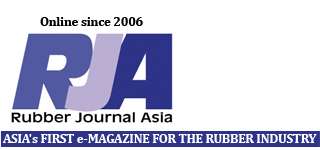 ACKNOWLEDGING the tight competition in Indonesia’s tyre markets, South Korea’s number one tyre producer, Hankook, has built its seventh plant in Cikarang, West Java, “merely” to cut the production costs of tyres they will sell outside Indonesia.
ACKNOWLEDGING the tight competition in Indonesia’s tyre markets, South Korea’s number one tyre producer, Hankook, has built its seventh plant in Cikarang, West Java, “merely” to cut the production costs of tyres they will sell outside Indonesia.
The new plant is also aimed at pleasing Middle-East customers, Hankook executive vice president Hyun Bum-cho said . “The Middle East loves Indonesian products,” he added.
Isn’t the surging automotive industry in Indonesia attractive enough for any tyre makers to sell their products in the country? Yes, but not for now, says Hankook.
The fact that it can enjoy lower production costs in Indonesia and that the country is one of the world’s biggest natural rubber producers has apparently been Hankook’s main concern, and not domestic market potential.
The 60-hectare Cikarang plant, inaugurated in June, currently produces about 10 million tyres a year. It is now Hankook’s third-largest factory out of its seven plants.
Within five years, Hankook targets to raise Cikarang plant’s production capacity to 18 to 20 million tyres. “After the five-year production target is reached, we plan to sell 30 percent of the tyres produced in Cikarang in the Indonesian market. We hope we can win 25 percent of market share [in Indonesia],” said Hyun.
But it seems that Hankook does not yet have a strategic plan to achieve its optimistic marketing target. The latest data shows that the world’s giant Bridgestone still tops Indonesia’s tyre market with 33 percent of marketshare. Local maker Gajah Tunggal is in second place with 26.4 percent. Good Year is fifth with a 6.2 percent marketshare.
“We don’t have all the details on marketing strategy in Indonesia yet. But we will surely sell everywhere Bridgestone is selling or Gajah Tunggal is selling,” Hyun said, when asked what was Hankook’s strategy to beat the current leaders in Indonesia’s tire market.
Hankook has a reason to be optimistic. They believe they can repeat their success story in China.
“When we established our first plant in China in 1999, it was not so different from our current situation in Indonesia. Now, Hankook is the number one tyre brand in China,” Hyun said.
Globally, the 70-year old Hankook managed to climb from the eleventh-largest tyre company in 2001
to the seventh as of 2007. Their global target is to become the world’s fifth-largest.
The establishment of the US$353 million Cikarang plant is part of its global target after succeeding to grow its revenue from the previous six plants: three in China, two in South Korea, and one in Hungary.
Hankook also operates five research and development centres in South Korea, China, Japan, US, and Germany in order to study market characteristic in specific regions and to develop technology to address local challenges. It claims it spends 5 percent of its annual revenue in research and development.
In order to prove the competitiveness of its high-performance tyres, Hankook has also become a tyre supplier for numerous motorsport teams and competitions, for example the touring car racing series DTM, the Le Mans 24-hour race, and Formula Drift in the US.
However, most of the competitions Hankook has sponsored are not popular in Indonesia. This might also explain why Hankook tyres are rarely seen being used by Jakartan motorists, except for the Transjakarta’s Daewoo and Hyundai buses.
Hankook’s top ultra-high-performance tyre products are Ventus ME01 and Optimo ME02. While Ventus ME01 offers quiet and excellent riding with its Ventless Mold technology, Optimo ME02 guarantees durability and steering stability by using high density belt cord and high hardness thin bead filler.
To develop its tires, and to benchmark the performance of its competitor’s products, Hankook has built two test circuit tracks called the Proving Ground G-Trac.
The first proving ground was built in 2005 on a 200,000 square-metre plot, which mainly serves as speed and handling test circuit. The second, which lies on a 70,000-square-metre area, was specifically designed as a wet-handling circuit.
Source: The Jakarta Post
